11 Short Streets With Curious Names
All on the East Side. Four from Sir Walter Scott novels and a couple Harvard connections.
The streets that intersect N. Prospect Avenue between E. Ogden and E. North avenues carry some of the more interesting-sounding names in the city. Albion, Royall, LaFayette, and Ivanhoe are names likely to arouse the curiosity of passersby. Most of them are side streets and just a few blocks long, and their names can be seen on the well-traveled N. Prospect Avenue.
Of these eleven streets, the shortest, and the first one north of E. Ogden Avenue, is E. Curtis Place. At only one block long, it connects N. Prospect and N. Farwell avenues, and is the one most recently named. In the 19th century it was called Keene Street, but that name was considered too much like Keefe Avenue in 1926 when the city was eliminating duplicate and similar-sounding names. It was renamed for the then recently deceased Truman Curtis, a public-spirited and progressive citizen who held public offices from 1868 to 1910. Curtis was born in Canada in 1841 and died in Milwaukee in 1922.
East Brady Street occurs next on the one-way N. Prospect Avenue. It was named in 1836 by a group of Chicago investors who named many nearby streets for themselves. This one was probably named for George Brady, a Chicago grocer, real estate man, and alderman.
Following E. Brady Street is E. Royall Place. It was named in 1874 by a Harvard University Law School professor, Joel Parker. Parker was appointed to the Royall Professorship at the Law School. It was endowed by Isaac Royall in 1815. This street leads to N. Cambridge Avenue, which was also developed by Parker and named for the city where Harvard Law School is located, Cambridge, Massachusetts.
Next in sequence is E. Kane Place, named for Alonzo Kane, a New York native, in 1890. Kane, who owned the land that includes Kane Place, was a real estate developer, an alderman, a county supervisor, and a newspaper publisher. Kane Place was originally called Dane Place.
The next six streets were initially numbered rather than named. But those numbers, First through Sixth streets, were duplicates of our current First though Sixth streets, so to eliminate confusion, they were given names in 1875.
First Street was dubbed Irving Place after Washington Irving, the first American writer to gain international fame. He is best remembered for his stories “The Legend of Sleepy Hollow” and “Rip Van Winkle.” Irving was born in New York in 1783 and died there in 1859.
Second Street was named LaFayette Place for Revolutionary War hero Marquis de LaFayette. The Frenchman’s complete name was Marie-Joseph Paul Yves Roch Gilbert du Motier, Marquis de La Fayette, which would not fit comfortably on a street sign. After helping to win our revolution, LaFayette returned to France to join the French Revolution. He died in Paris in 1834 at age 76.
Fourth Street now is called Woodstock Place thanks to Scott’s novel Woodstock. The “Good Devil of Woodstock,” a legend about Woodstock, England, was the inspiration for the novel.
Fifth Street was given the name of Kenilworth Place after the title of another Scott novel. The story deals with Kenilworth Castle in Kenilworth, England.
Scott’s novel Ivanhoe was the source of the new name for Sixth Street, Ivanhoe Place. The tale relates stories of knighthood and chivalry in feudal England.
North Avenue, at the end of our trip, has no cultural allusions. It was simply the northern border of the city when it was named in 1856.
Photo Gallery
Carl Baehr is the author of Milwaukee Streets: The Stories Behind Their Names and From the Emerald Isle to the Cream City: A History of the Irish in Milwaukee.
If you think stories like this are important, become a member of Urban Milwaukee and help support real, independent journalism. Plus you get some cool added benefits.
City Streets
-
Revised Milwaukee Streets Book Dishes the Dirt
 Nov 3rd, 2025 by Michael Horne
Nov 3rd, 2025 by Michael Horne
-
The Curious History of Cathedral Square
 Sep 7th, 2021 by Carl Baehr
Sep 7th, 2021 by Carl Baehr
-
Gordon Place is Rich with Milwaukee History
 May 25th, 2021 by Carl Baehr
May 25th, 2021 by Carl Baehr


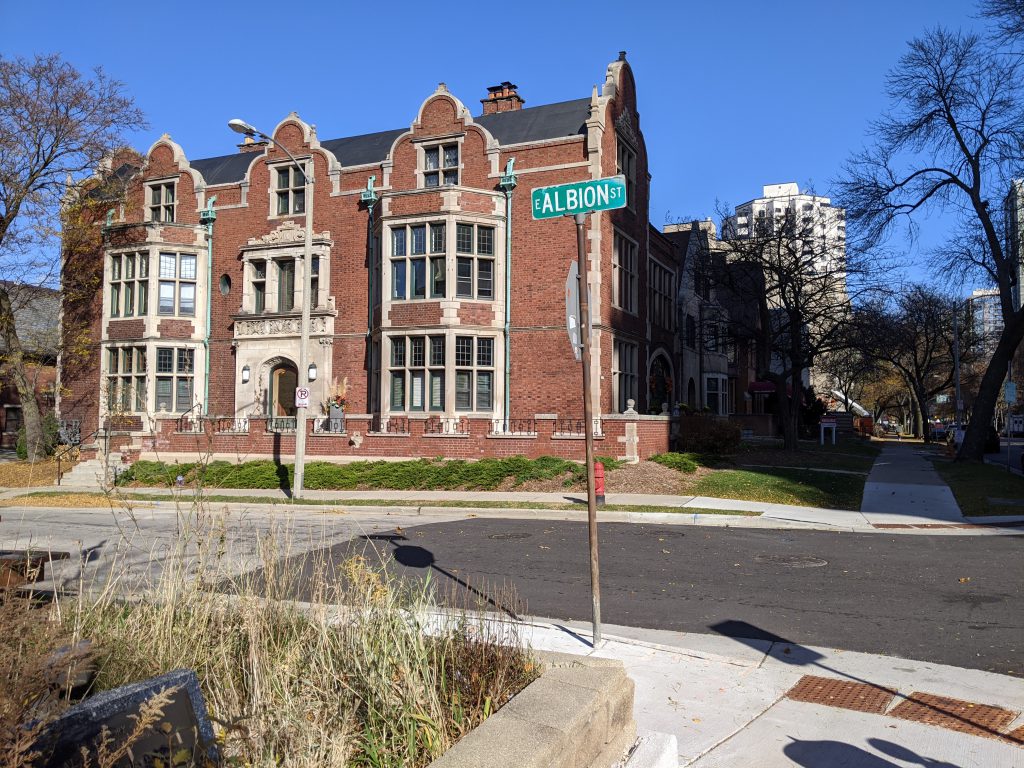
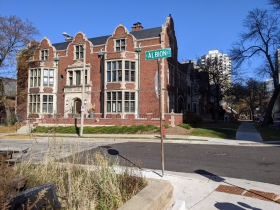
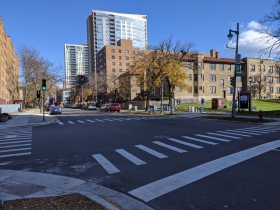
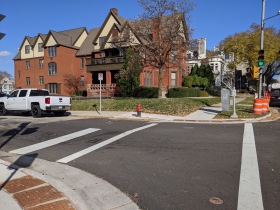
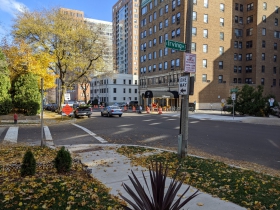
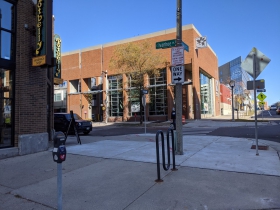
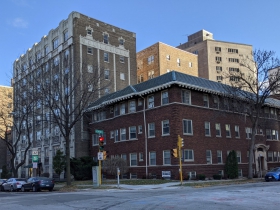



















Dang, now we’ll have to go back and read those Waverley novels.
Thankgoodness they are out of copyright and you can download them on your tablet.
Thomas Gaudynski
Carl: What is the history of Kisslich Place (39th-40th between Vliet and Cherry Streets), in the distant past, a site for numerous shady adolescent activities, including by “M” whose reputation was to be willing to do anything for anybody for a Granpa Graf’s Root Beer?
Carl, thanks a lot. I have lived in The Sterling since shortly after it was opened in 2006, and we have all wondered for years where Royall Place came from. I sent a link to your story out to about half the building!
I have also wondered about Albion, Curtis, et al, for most of my life. You’re a champ. I lived for a long time on Warren Ave., too, and have always wondered who that street was named after.
Great article, thanks for doing all this research!
For all you street name lovers, many of your questions about their origins can be found in Carl Baehr’s Milwaukee Streets: The Stories Behind Their Names (1995) and available at most local libraries. By the way, Carl is working on an expanded second edition, which will probably be out next year.
@ frank a schneiger
I am working on the second edition of my street name book and have included the updated entry for Kisslich Place below. I hope “M” didn’t have to do anything too distasteful to get his root beer.
KISSLICH PLACE
1400 North, between 3900 and 4000 West
Origin: Washington Park
Reinhold and Maria Palling Kiesslich, Austrian immigrants, bought the land that now includes Kisslich Place in the late 1880s, when Reinhold was a shipping clerk at the Pabst Brewing Company. In 1905, nine years after Reinhold died, Maria subdivided their land as the Kisslich Subdivision. In 1927, the street renaming commission named this alley, using the subdivision spelling rather than the family spelling. It is one of only a few alleys in the city that has a name.
The Kiesslichs arrived in the United States in 1871 with two of their children. They had five more children before Reinhold died at age 57 in 1896. Maria lived until 1933 when she was 87. The couple is buried in Union Cemetery.
@ Keith Prochnow
Thanks for the kind words. Below is the entry for Warren Avenue for the second edition of my street name book.
WARREN AVENUE
1200 East, between 1500 and 2000 North
Origin: Lower East Side
In 1884 the city passed an ordinance that changed Doty Street to Warren Avenue. Two theories have been advanced for whom it was named. One says the street was named for Nathaniel Warren, who owned a marble yard on Broadway forty years before. No Nathaniel Warren, with or without a marble yard, shows up on any city directories of the time.
Another idea is that it honors a Revolutionary War patriot, Joseph Warren. Judging by the city’s naming habits, the well-known Joseph Warren, the Revolutionary Warren, is more likely. The city tended to rename streets for more prominent people, either local or national, just as they named LaFayette Place for another Revolutionary War figure nine years earlier. Joseph Warren, the patriot, died at the Battle of Bunker Hill at the age of 34 in 1775.
Carl: Thanks Carl. This is great stuff. Regarding “M.” “M” was a “she,” not a “he,” and I think I would leave it by simply saying that she was good for Granpa Graf’s business, a lot of Root Beers, but turned out okay in the end, a good Catholic girl, more or less.
Fascinating stuff, Carl,
Tom and Karen (across the street from George and Barb)
Fascinating stuff, Carl,
Tom and Karen (across the street from George and Barb)